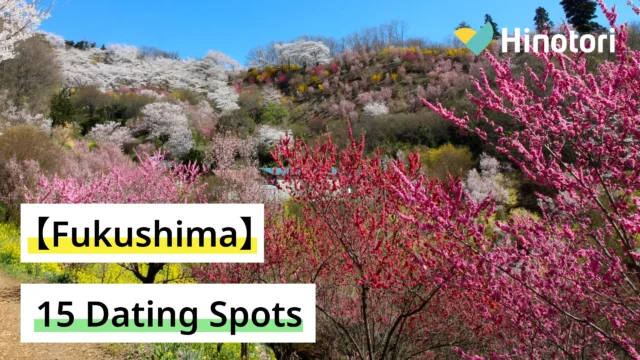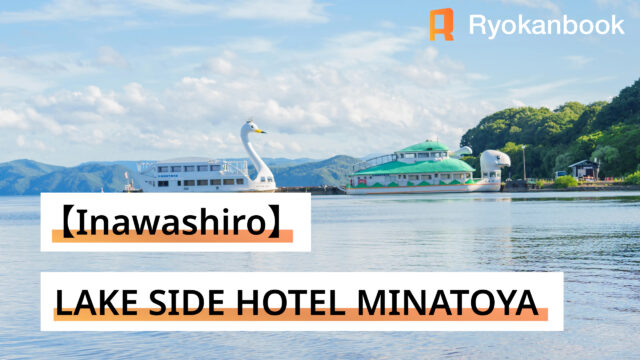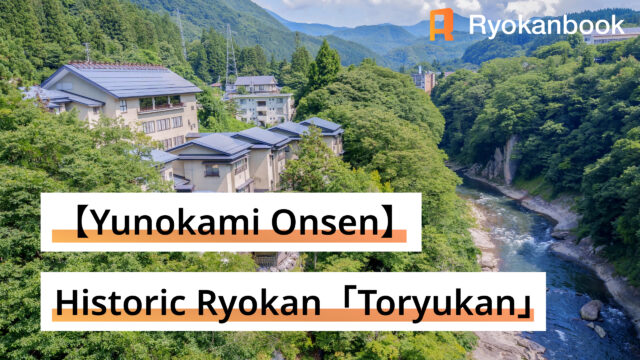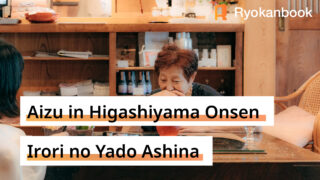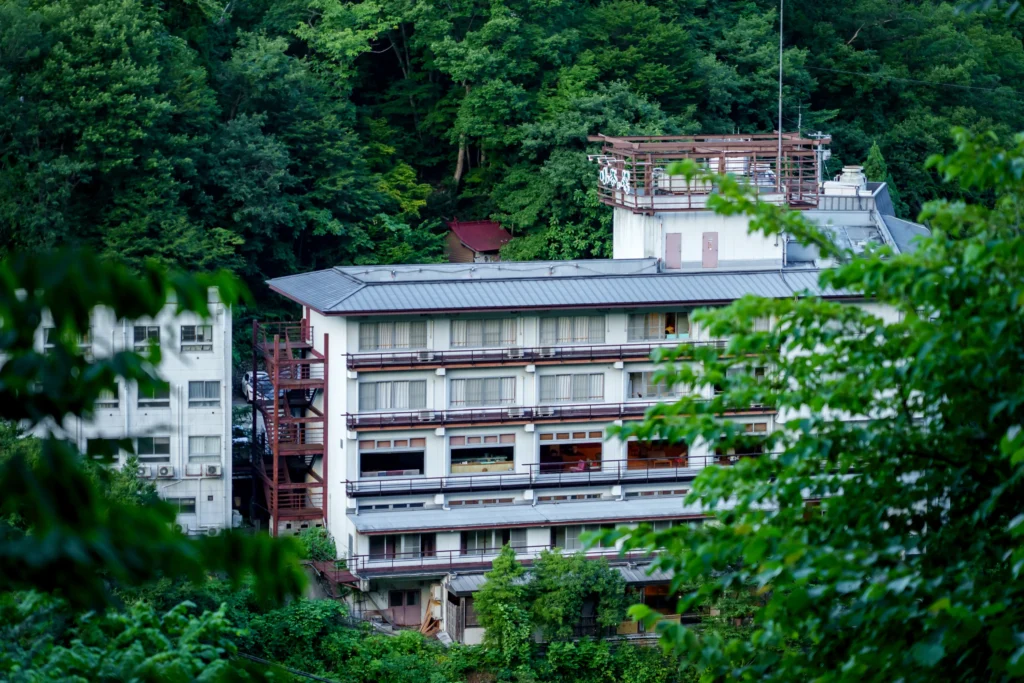
【Lead Text】
Fudokan Kotani no Yu is a hot spring inn where you can fully enjoy natural, free-flowing (onsen) waters set against the stunning backdrop of the Ōkawa Gorge.
Surrounded by the seasonal beauty of the valley, it’s the perfect getaway for those seeking rest and rejuvenation for both body and mind.
In this article, we’ll share the charms of the inn from a firsthand stay, as well as must-visit nearby spots easily accessible by train and bus.
▷View more details about this Ryokan
Hello! I’m Aoi, born and raised in Fukushima and currently working at a travel agency.
“I want more people to discover the Fukushima I love”—with that thought in mind, I’m excited to share the charms of Ashinomaki Onsen’s Fudokan Kotani no Yu with you.
- Arrival at the Nearest Station|Welcome Shuttle Service
- Exterior|Struck by the Size of the Building
- Check-In|Lobby Surrounded by Lush Greenery
- Room|Japanese-Style Room with a View of the Valley from Every Window
- Hot Springs|Soaking in the Source-Fed Waters Amid the Valley Scenery
- Meals|Well-balanced lineup for breakfast and dinner
- Morning Walk|Discover a Shrine on the Ryokan Grounds!?
- Gift Shop|A Unique Selection of Local Treasures
- Checkout|A Stay Surrounded by the Valley
- Yunokami Onsen Station|Take the Local Bus to a “Must-Visit” Spot
- Arriving at Ōuchi-juku|Step into an Edo-Period Post Town with Thatched Roofs
- Ōuchi-juku: A Journey Through Timeless Beauty
Arrival at the Nearest Station|Welcome Shuttle Service

From Ashinomaki Onsen Station, the inn is about a 10-minute drive. With the hotel’s shuttle service, even first-time visitors can relax on the way.
Once we got in the car, the attendant greeted us warmly: “Was it too hot?” “Is this your first time around here?” Their friendly words instantly eased any travel tension.
Fudokan is tucked down a narrow road surrounded by trees. On the left side of the slope is a convenience store, which is handy in case you need anything. The road drops steeply from the main street, giving a slightly surreal feeling, as if you’re being drawn deep into the mountains.
Exterior|Struck by the Size of the Building
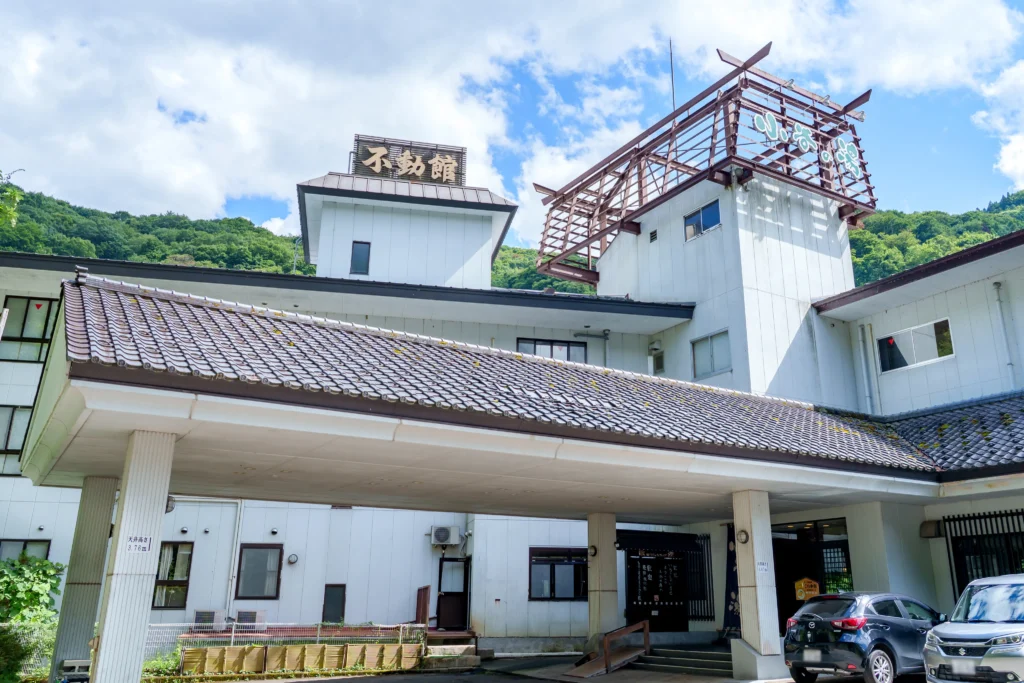
The first thing that caught my eye upon arrival was the sheer size of the building.
According to the attendant, the inn has a total of 33 rooms and can accommodate up to 105 guests. In the past, it was also frequently used for large banquets. (In Japan, a banquet isn’t just a meal—it’s a lively gathering around food and drinks, often with singing and performances. You could think of it as similar to a company holiday party or a big family reunion in Western cultures.)
I couldn’t help but imagine how wonderful it must feel to hold a banquet here, surrounded by such natural beauty.
Check-In|Lobby Surrounded by Lush Greenery

As soon as I stepped inside, my eyes were drawn to the breathtaking greenery visible through the expansive windows.
Looking out through these large glass panes felt like watching a scene curated on a special stage—each tree seemed to receive its own spotlight, and I discovered a whole new way to enjoy nature. When I shared my admiration with the front desk staff, they told me, “Actually, I was so captivated by this view that it’s why I decided to work here.”
Moments like these—casual, heartfelt conversations with staff—are part of what makes Fudokan so charming.

I was also surprised to find a kids’ area right next to the lobby. I thought my three-year-old niece would be thrilled if she were here.
In the front, there were even baby shampoos and other essentials, which felt incredibly thoughtful.
Overall, the space felt spacious and open, both inside the building and in the surrounding nature. There were so many things to see that I couldn’t help but feel excited as I explored.
Room|Japanese-Style Room with a View of the Valley from Every Window
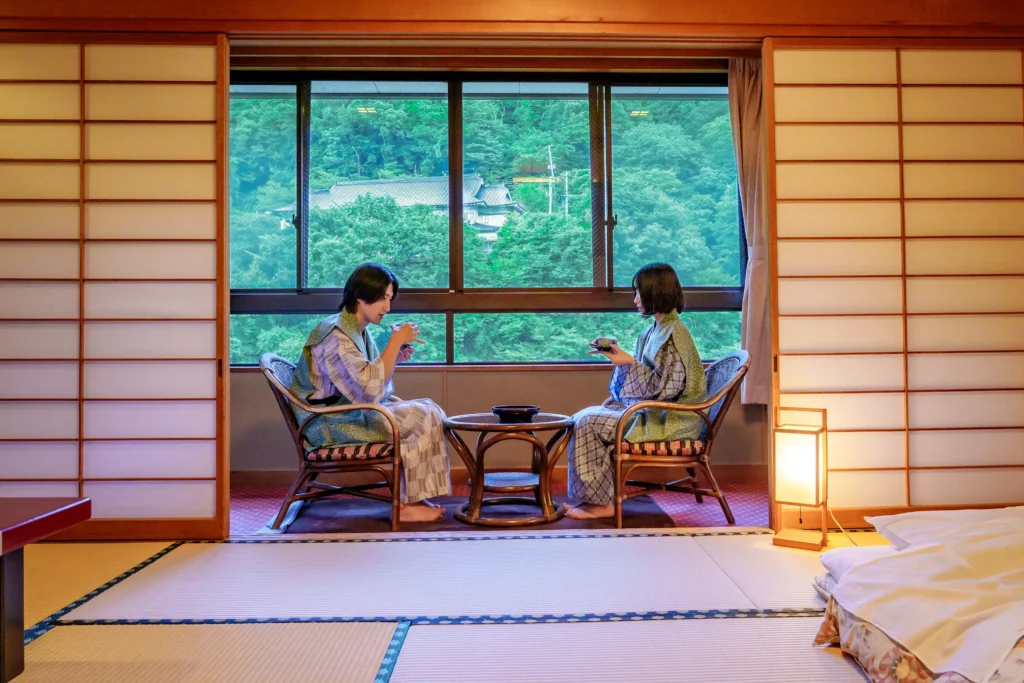
When I entered the room I was shown, the first thing that caught my eye was the beautiful valley stretching out beyond the window. Although I usually prefer the sea, I couldn’t help but be captivated by the breathtaking mountain scenery.
The room, with its subtle scent of tatami mats, offers a completely different atmosphere from a standard wood-floor room—somewhere nostalgic yet calming. While the building itself shows a bit of age, the tatami mats are new, with no unpleasant odors, making the space very comfortable.
Instead of doors, sliding paper doors (fusuma) separate the spaces, and soft light filters gently through the shoji screens.
Sitting by the window, I enjoyed a cup of tea with a friend while gazing out at the lush greenery. The cookies recommended by the inn’s manager were so delicious that I bought some at the gift shop the next day.

Sitting at the low table on cushions felt refreshingly new—I tried both sitting formally in seiza and cross-legged. At night, the staff laid out the futons from the closet, and we slept on them. Wrapped in a futon on the tatami, there was a unique sense of comfort that differs from a hotel bed. I truly felt, “This is the charm of a Japanese-style room.”
Hot Springs|Soaking in the Source-Fed Waters Amid the Valley Scenery

One of Fudokan’s greatest charms is soaking in the hot springs while gazing at the breathtaking valley view. This scenery is something that photos or words can hardly capture—you really have to experience it in person.
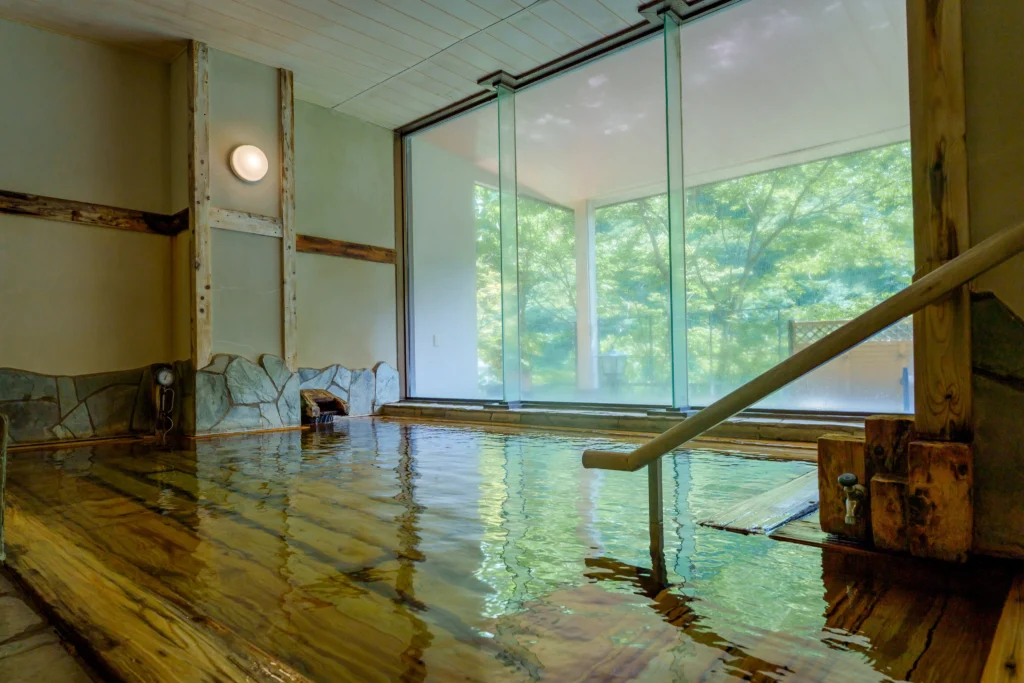
The hot spring at Ashinomaki Onsen here is a sulfate spring, said to promote blood circulation, help prevent arteriosclerosis, and retain body heat. The water is even safe to drink, with potential benefits for chronic constipation and lifestyle-related illnesses.
I was able to warm my slightly chilled body in the middle of the night, and my friend seemed to enjoy dipping in the water repeatedly. I, personally, have dry skin, and I was amazed to find it feeling soft and smooth the next morning.
It’s easy to see why locals return again and again—both the stunning scenery and the therapeutic benefits make it irresistible.

After warming up thoroughly in the hot springs, we headed to the indoor table tennis area.
In traditional Japanese ryokan, playing ping-pong after a bath is a classic pastime, and trying it out really does live up to the reputation. We laughed together while keeping rallies going with friends, and even had a bit of a serious match. Having a space like this after soaking in the bath is such a fun way to create lasting memories.

We laughed while keeping rallies going with friends and family, and even had a bit of a serious match. Having a place to play like this after a bath is such a fun way to make lasting memories.
Meals|Well-balanced lineup for breakfast and dinner
Dinner
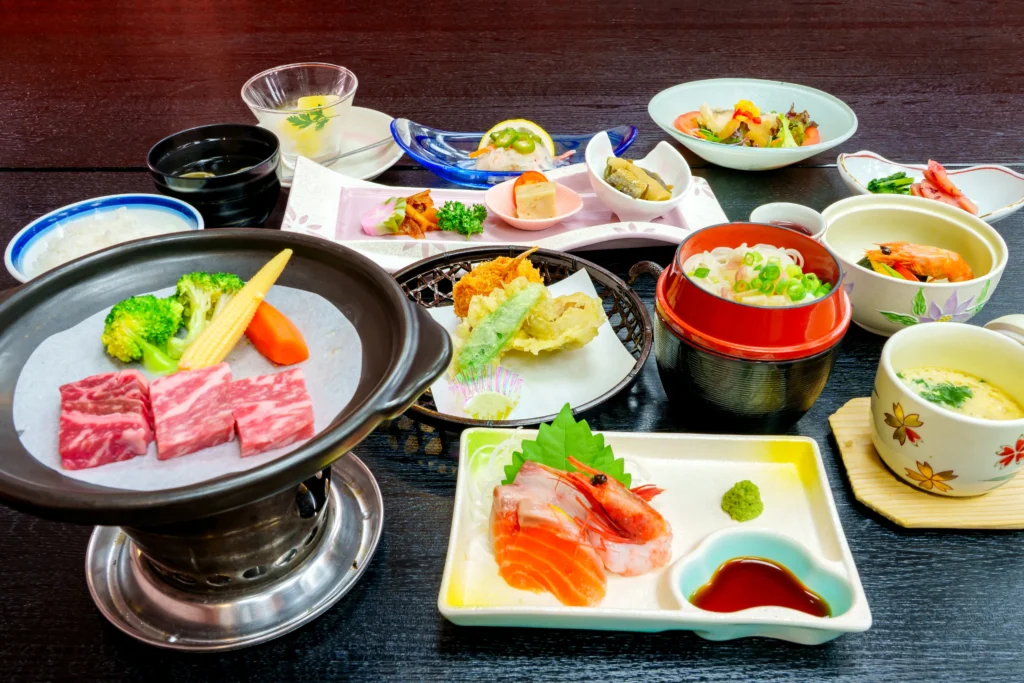
One of the first things that surprises you when staying at a ryokan is the sheer variety and quality of the meals.
For example, at a casual family restaurant, you might order a hamburger set, which usually comes with just the main dish, rice, and soup.
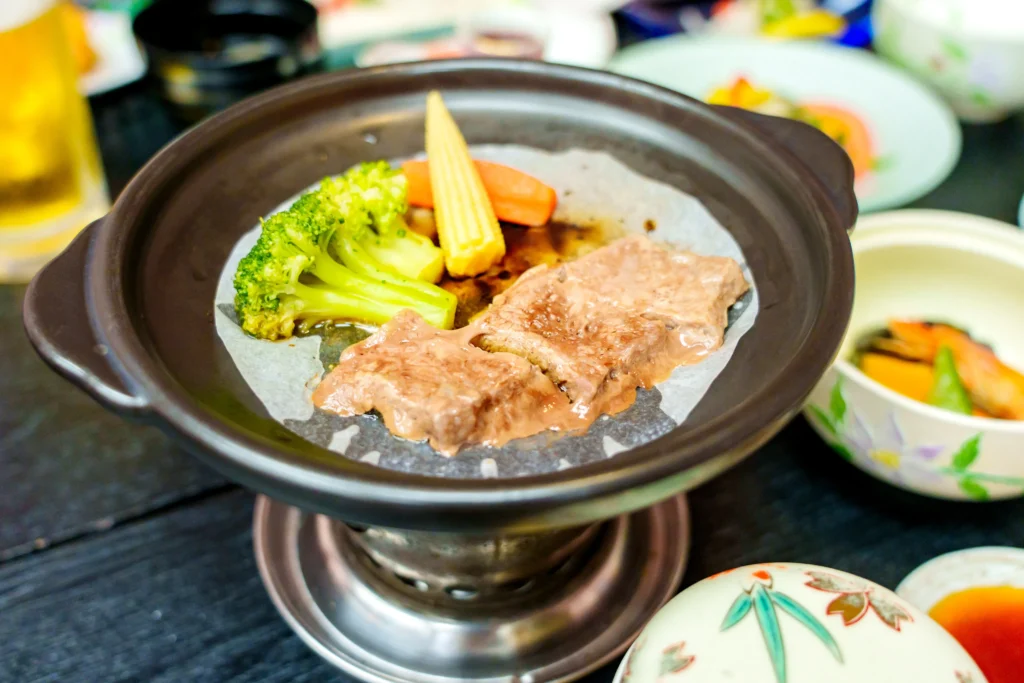
But a ryokan dinner is completely different. There’s a meat dish, a fish dish, small bowls featuring local vegetables, rice or soup to finish, and even dessert at the end. The table is filled with dishes that are a feast for the eyes as well as the palate.
Here is the actual menu. The variety of dishes is so impressive that it’s hard not to get excited.
What left the strongest impression on me was the Koshihikari rice from Aizu-Bange. The freshly cooked rice was fluffy and perfectly prepared—it’s been a long time since I’ve had rice this delicious.
Breakfast
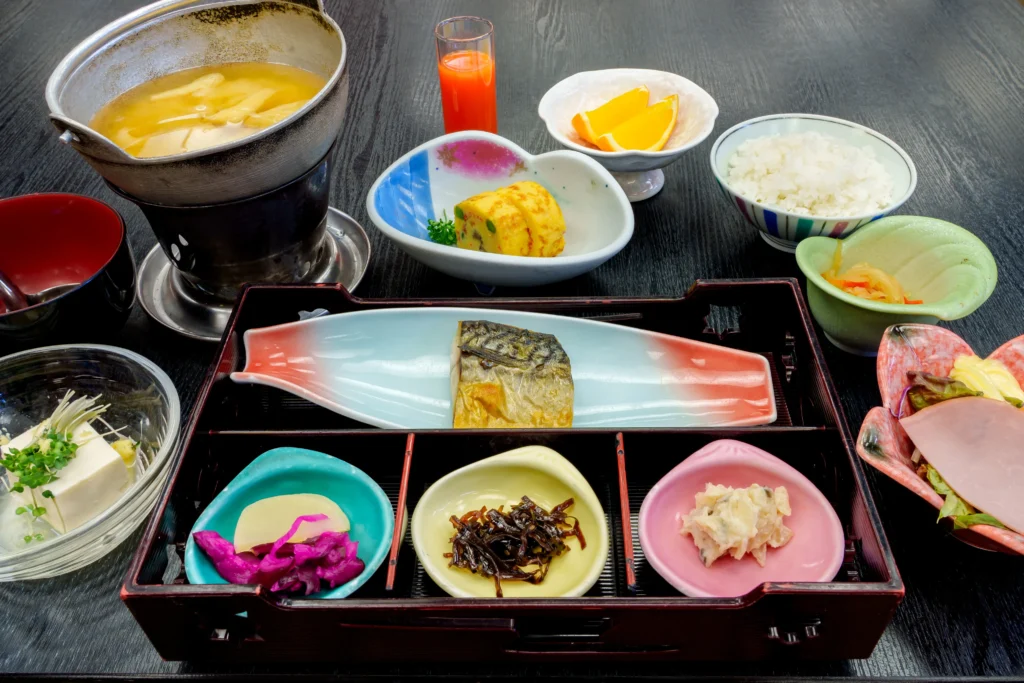

The breakfast was thoughtfully balanced, giving a nourishing start to the day. I especially loved the miso soup, served piping hot.
The way both “satisfaction of the heart” and “satisfaction of the stomach” came together so perfectly is truly something unique to a ryokan-style meal.

After breakfast, I took a short break in the third-floor lobby.
That’s when I noticed a self-service coffee machine available for guests. From 8:00 to 9:30 in the morning, you can enjoy a complimentary cup of coffee.
There’s something about finishing a meal that naturally makes you crave coffee, isn’t there? It was such a small but thoughtful touch that quietly made that desire a reality, and I really appreciated it.
Morning Walk|Discover a Shrine on the Ryokan Grounds!?
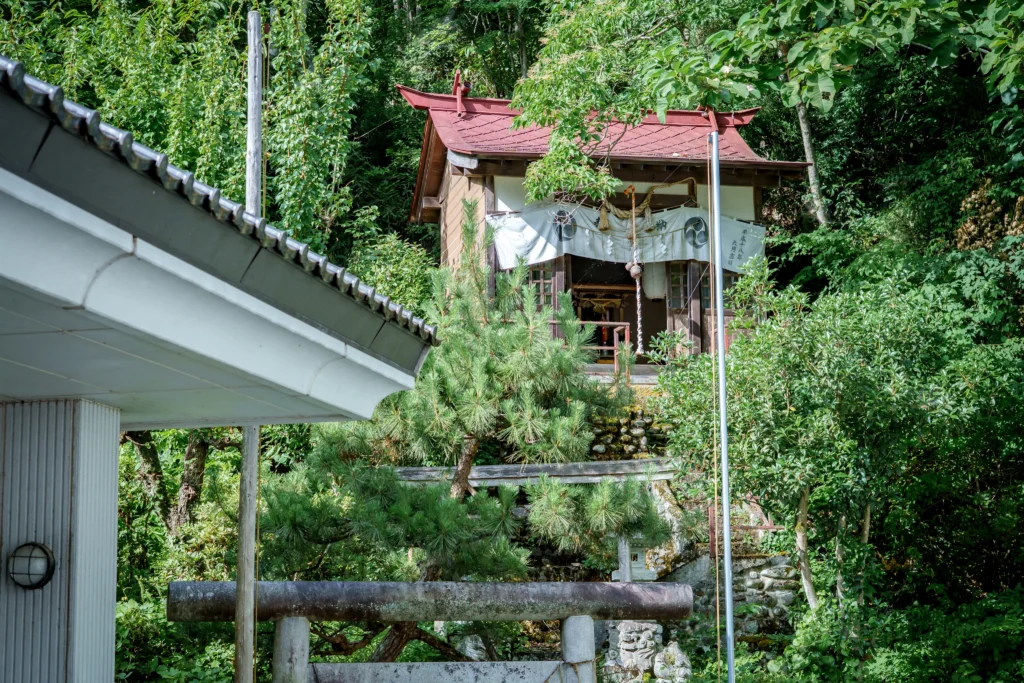
Stepping outside to get a breath of fresh air, I noticed a small shrine right in front of me—something I hadn’t seen the day before. Having a shrine on the ryokan grounds felt surprisingly special and unique.

As many of you know, Japan is one of the few countries in the world with a truly multi-religious society. While cherishing its own cultural traditions, it has also learned to embrace various religions and values with remarkable flexibility. I am deeply fascinated by this Japanese spirit of coexistence and openness.
You can simply stroll around the shrine and soak in the atmosphere, or just relax and let yourself be embraced by the enclosed natural surroundings. Praying isn’t something you have to do—if you feel like it, give it a try, and experience it as one part of your visit.
Gift Shop|A Unique Selection of Local Treasures
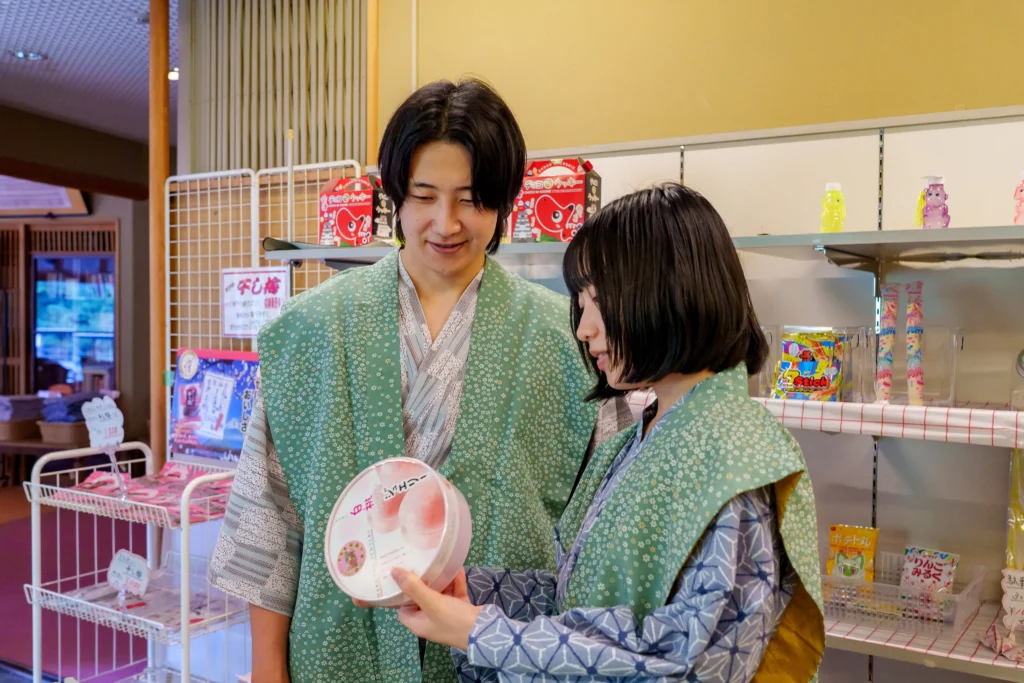
To the left of the lobby, there’s a small gift corner.
It’s filled with items that make you want to pick them up, from sweets made with Fukushima’s famous peaches to the cookies recommended by the inn’s manager that you saw in your room.
What particularly caught my eye were the women’s clothing pieces neatly displayed on the shelves. It’s quite unusual to find apparel in a ryokan gift shop, which made the selection both charming and delightfully unexpected.
Checkout|A Stay Surrounded by the Valley

The view from the lobby was, as always, incredibly refreshing to the heart.
As my friend and I said, “This will be the last time we see it,” we took one final, long look at the scenery before leaving Fudokan. From check-in to check-out, being surrounded by the beautiful gorge made for a truly joyful stay for a nature lover like me.
Next time, I hope to visit during the winter, when the snow-covered landscape can be admired.
Ryokan Name: Fudokan Oya no Yu
Address: 2498-2 Yunohira, Oto-machi, Aizuwakamatsu-shi, Fukushima 969-5146, Japan
Access:
【By Train】
Take the Aizu Railway to Ashinomaki Onsen Station. From the station, it’s about an 8-minute drive to the ryokan (shuttle service available under certain conditions).
【By Car】
From Tokyo: Take the Tohoku Expressway to Koriyama JCT → Ban-etsu Expressway toward Aizu → Aizuwakamatsu IC → About 20 km via Route 118
Approximate travel time: 30 minutes from the IC
Book your stay at 「Fudokan Oya no Yu」here:
Yunokami Onsen Station|Take the Local Bus to a “Must-Visit” Spot
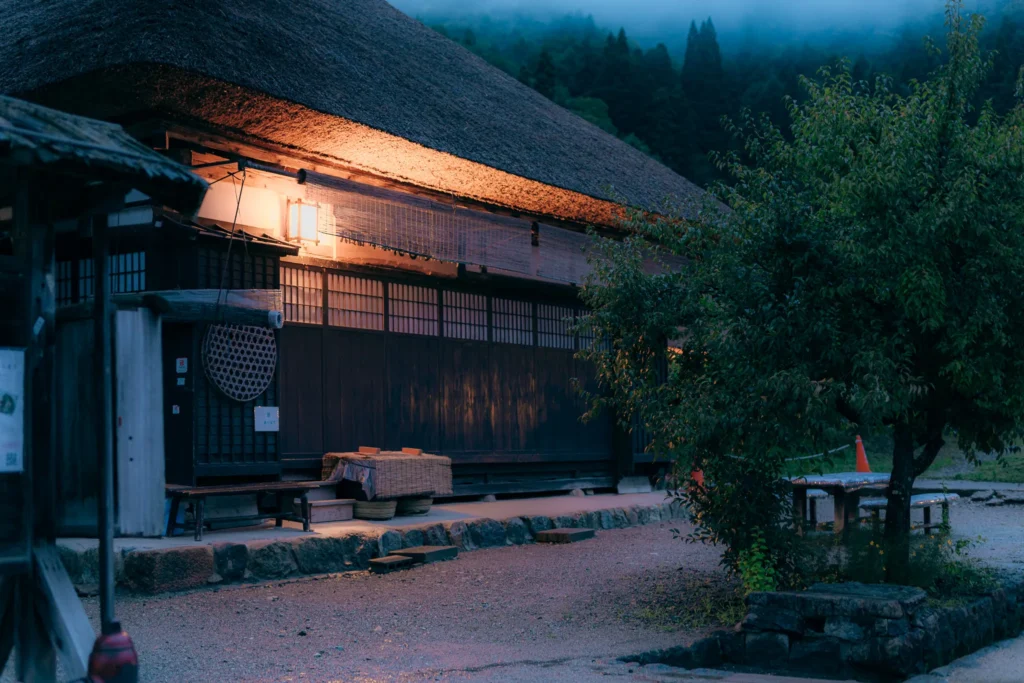
After a roughly 20-minute ride on the Aizu Railway from Ashinomaki Onsen Station, we arrived at Yunokami Onsen Station, the nearest station to today’s destination.
This station is famous for its thatched roof—a rare design considered unique in Japan. Next to the station, there’s even a foot bath, allowing travelers to relax while waiting for the train.
From here, we took the “Saru-yu Go” bus operated by Hirota Taxi to reach our main sightseeing spot. For more details on how to ride this bus, check out our dedicated guide linked in the article.
Arriving at Ōuchi-juku|Step into an Edo-Period Post Town with Thatched Roofs
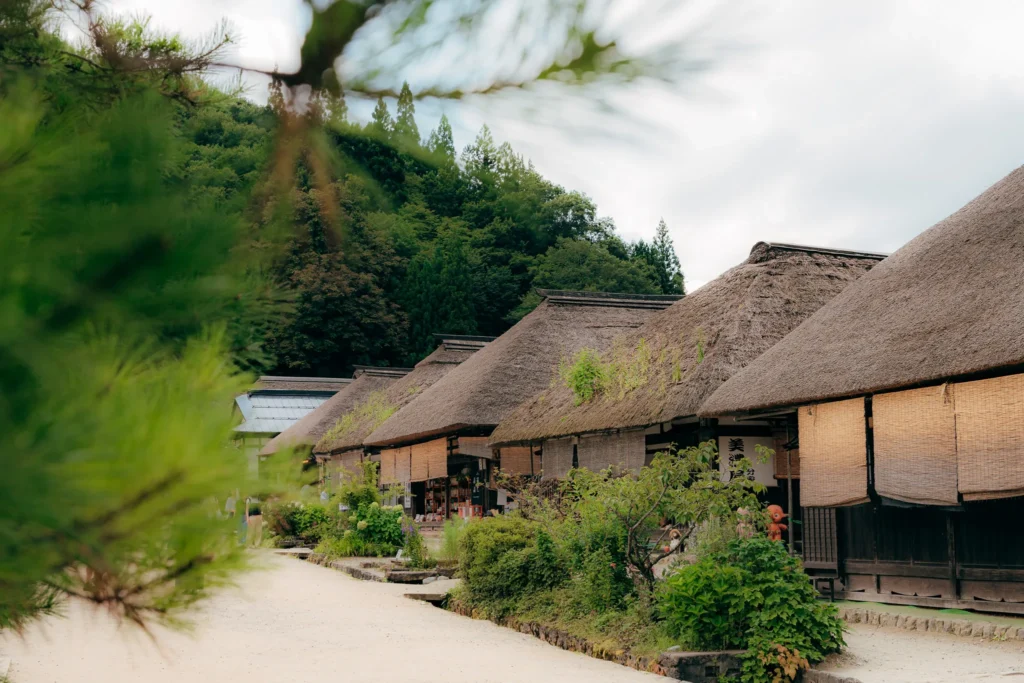
Ōuchi-juku once flourished as a post town along the route connecting Aizuwakamatsu and Nikko Imaichi. Today, it is recognized as a National Important Preservation District for Groups of Traditional Buildings, where walking along the street lined with thatched-roof houses feels like a journey back to the Edo period.
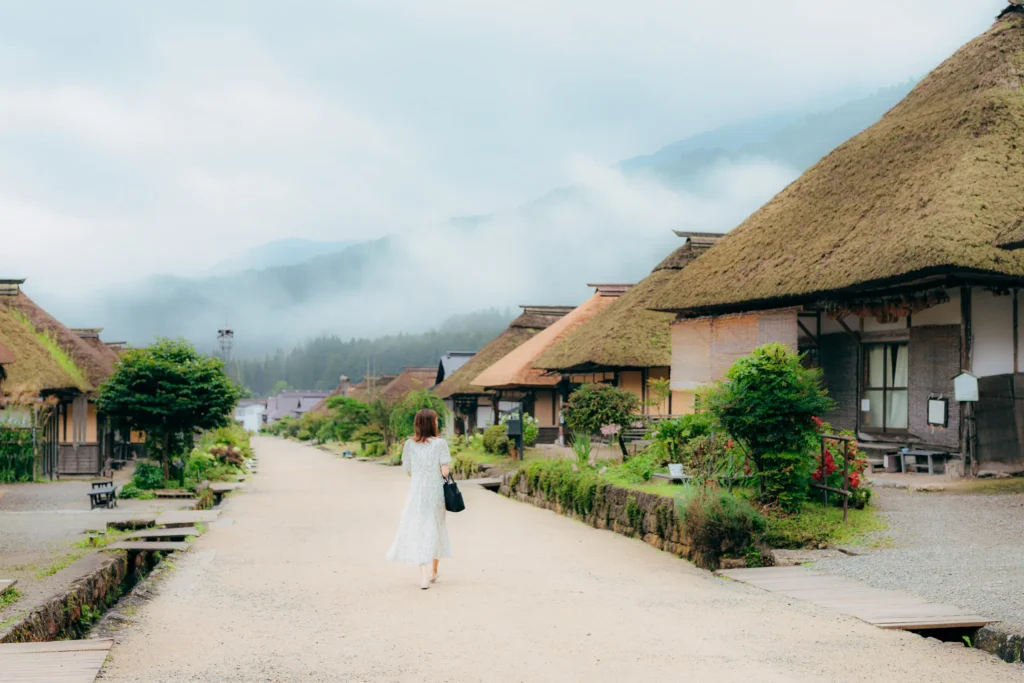
Of the roughly 30 traditional houses, about 18 now operate as restaurants or cafés. What makes Ōuchi-juku truly unique is that people still live there—it’s not just a tourist attraction, but a village where daily life and tourism coexist.
Behind the iconic thatched roofs, you’ll also see modern residences. Personally, one of my childhood friends was from Ōuchi-juku, and I often visited as a child. Even back then, I fell in love with this scenery, and now I always recommend it to friends as one of my favorite spots.
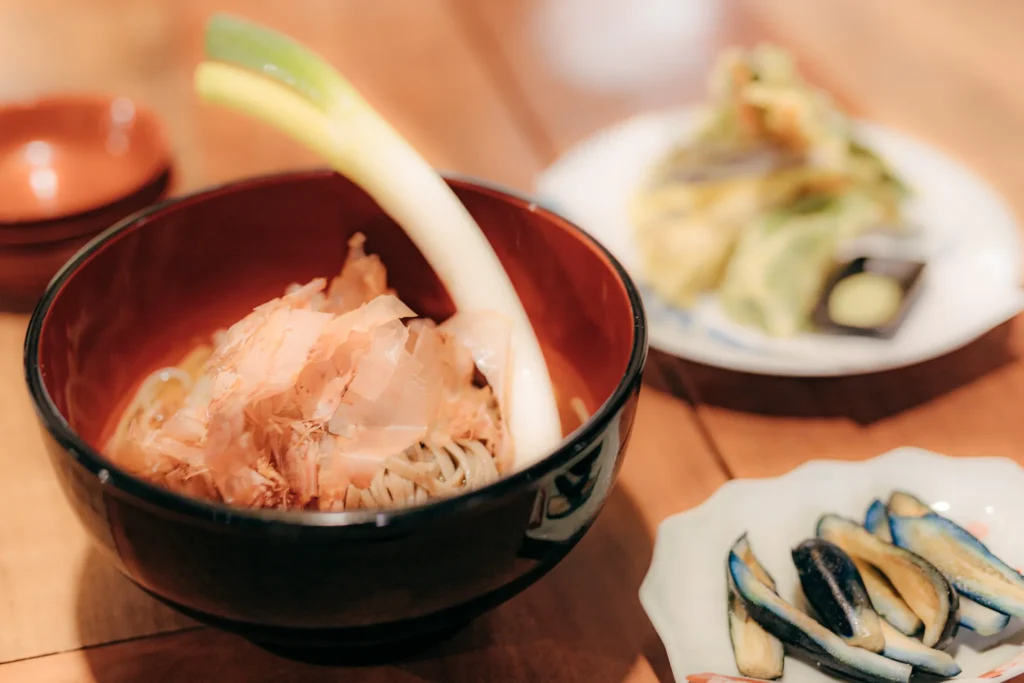
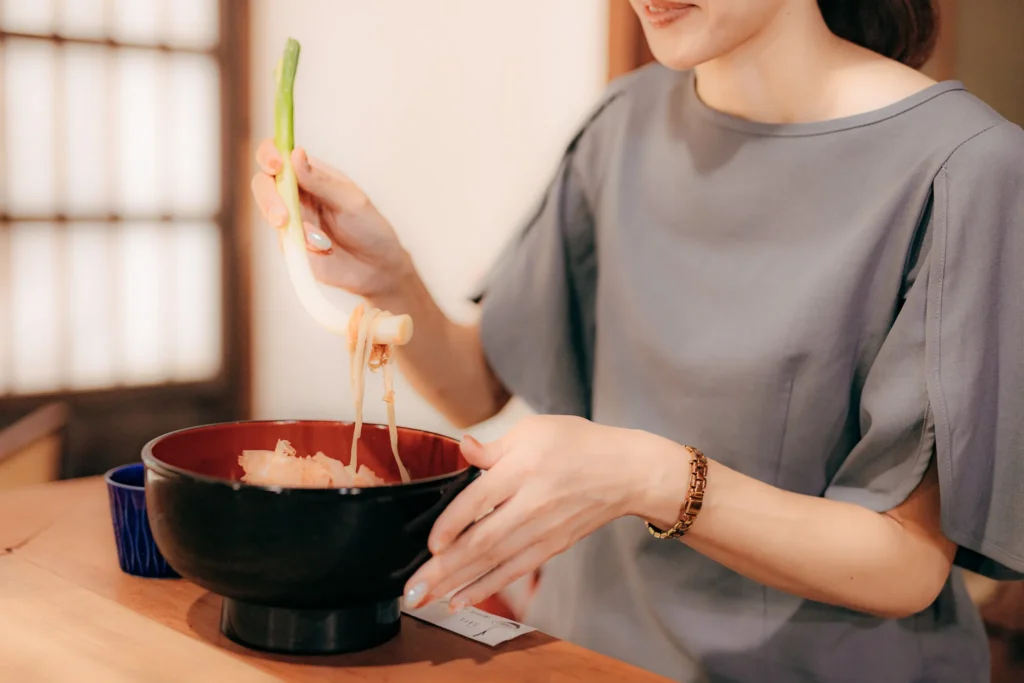
Speaking of local specialties, there’s Negi Soba at Misawaya, served over a traditional hearth.
Instead of chopsticks, you eat the soba by scooping it up with a whole green onion—a truly memorable experience! Surprisingly, the onion is mild, making it quite easy to eat despite the unusual method.
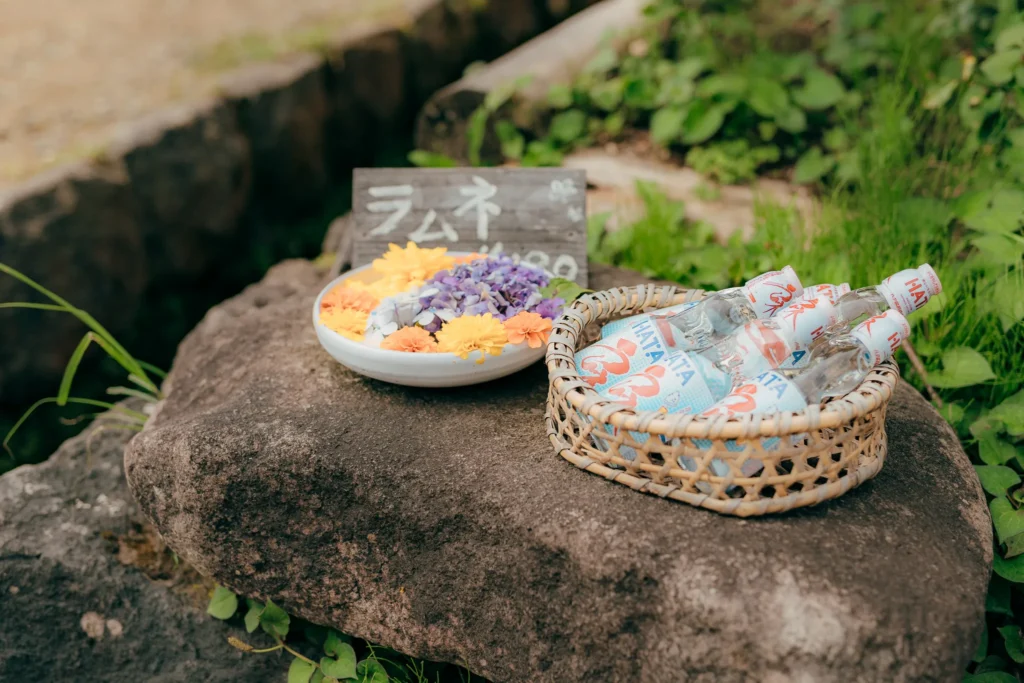
After the meal, I enjoyed a chilled ramune soda from a small stream running along the street.
Holding the unique glass bottle, the coolness seeps through, making each sip feel like a small reward. There’s something timelessly special about drinking ramune this way—it’s a nostalgic treat that never loses its charm, even for adults.
Ōuchi-juku: A Journey Through Timeless Beauty

In Japan, there’s a proverb: “The older the doctor and the miso, the better.” It means that experience and time enhance the value of things.
The thatched roofs of Ōuchi-juku perfectly embody this saying. Exposed to wind and rain for centuries, they have been carefully maintained and repaired over time, which is why their beautiful scenery has been preserved to this day.
While there’s always excitement in discovering something new, there’s a special pleasure in taking the time to appreciate landscapes shaped by history and tradition.
Spot Name: Ōuchi-juku
Address: Ōuchi, Shimogō-machi, Minamiaizu-gun, Fukushima 969-5207, Japan
【By Train】
① From Asakusa Station
Route: Tobu Railway → Yagan Railway → Aizu Railway Asakusa → Shin-Fujiwara → Aizu-Kōgen-Ozeguchi → Yunokami Onsen Station
From Station to Ōuchi-juku: approx. 10 minutes by car or bus
Travel time: approx. 3.5 hours (also accessible from JR Shinjuku Station)
② From JR Tokyo Station
Route: Tohoku Shinkansen → JR Ban’etsu West Line → Aizu Railway Tokyo → Koriyama → Aizu-Wakamatsu → Yunokami Onsen Station
From Station to Ōuchi-juku: approx. 10 minutes by car
Travel time: approx. 3.5 hours
【By Car】
From Tokyo:Tohoku Expressway → Shirakawa IC → Route 289 → Ōuchi-juku
Travel time: approx. 3 hours
▷Learn more about the Ōuchi-juku
▷Discover more about Aizu
▷View Ryokans in Aizu



